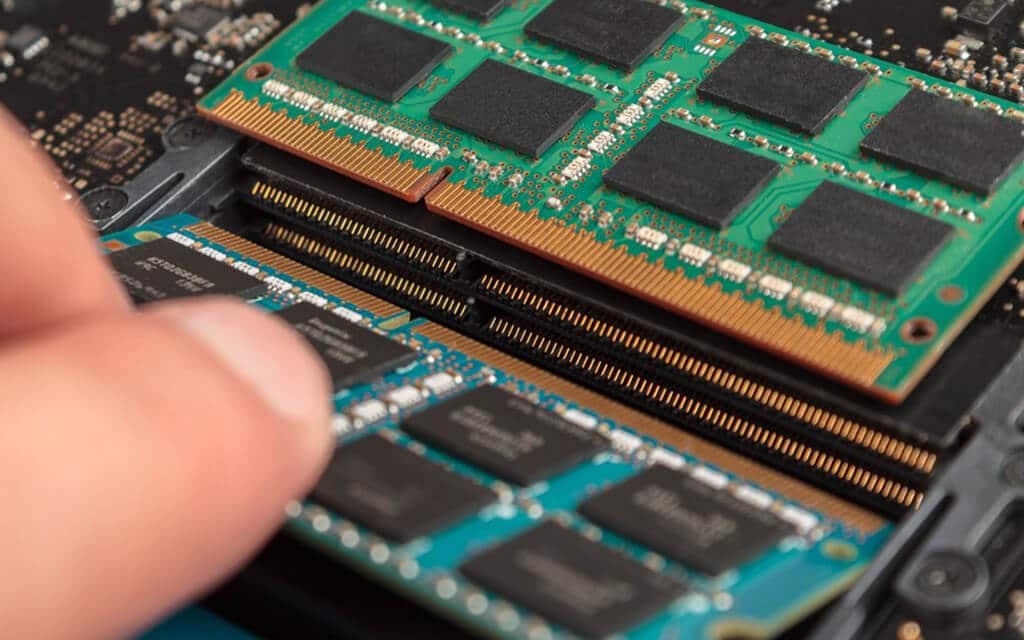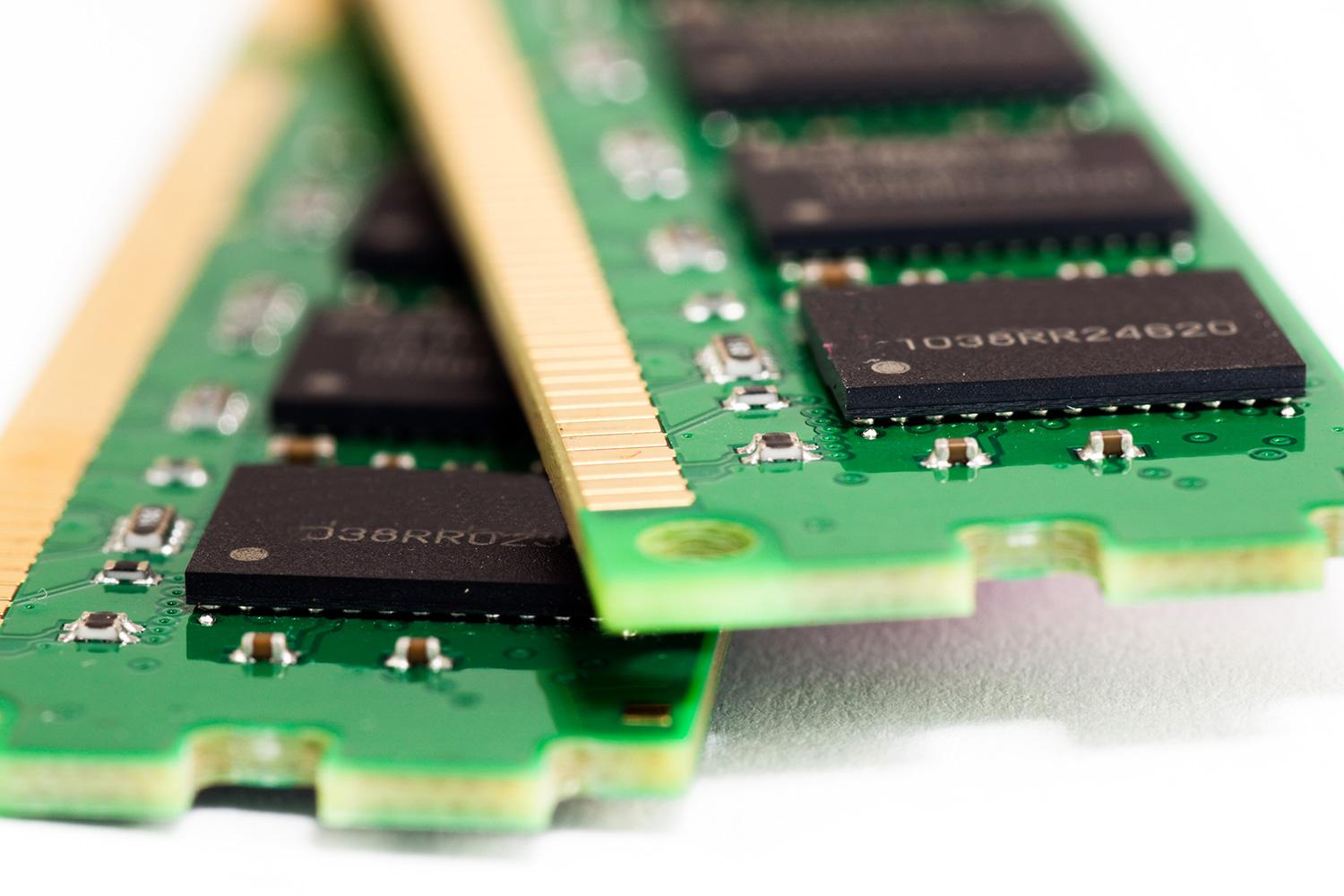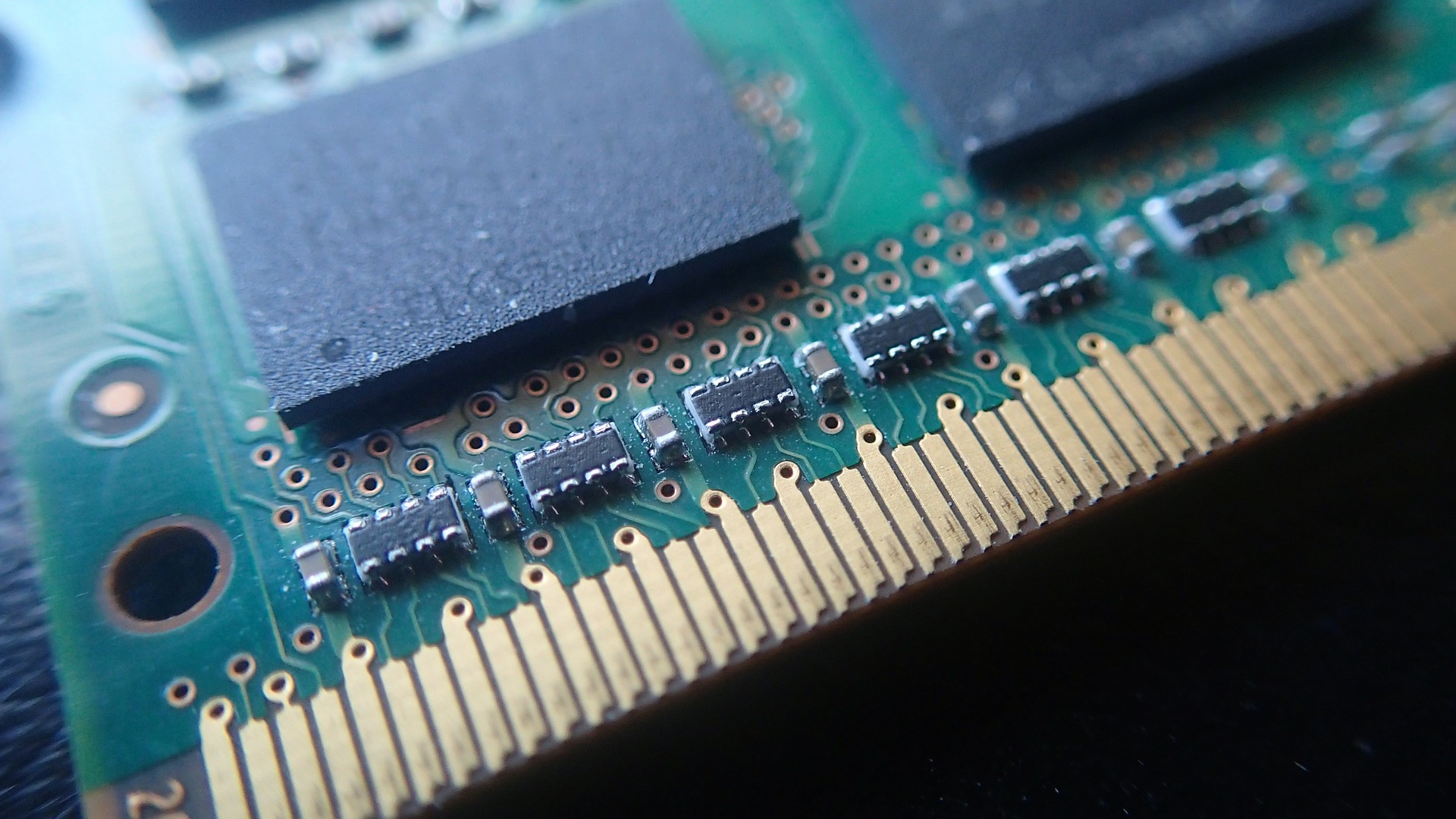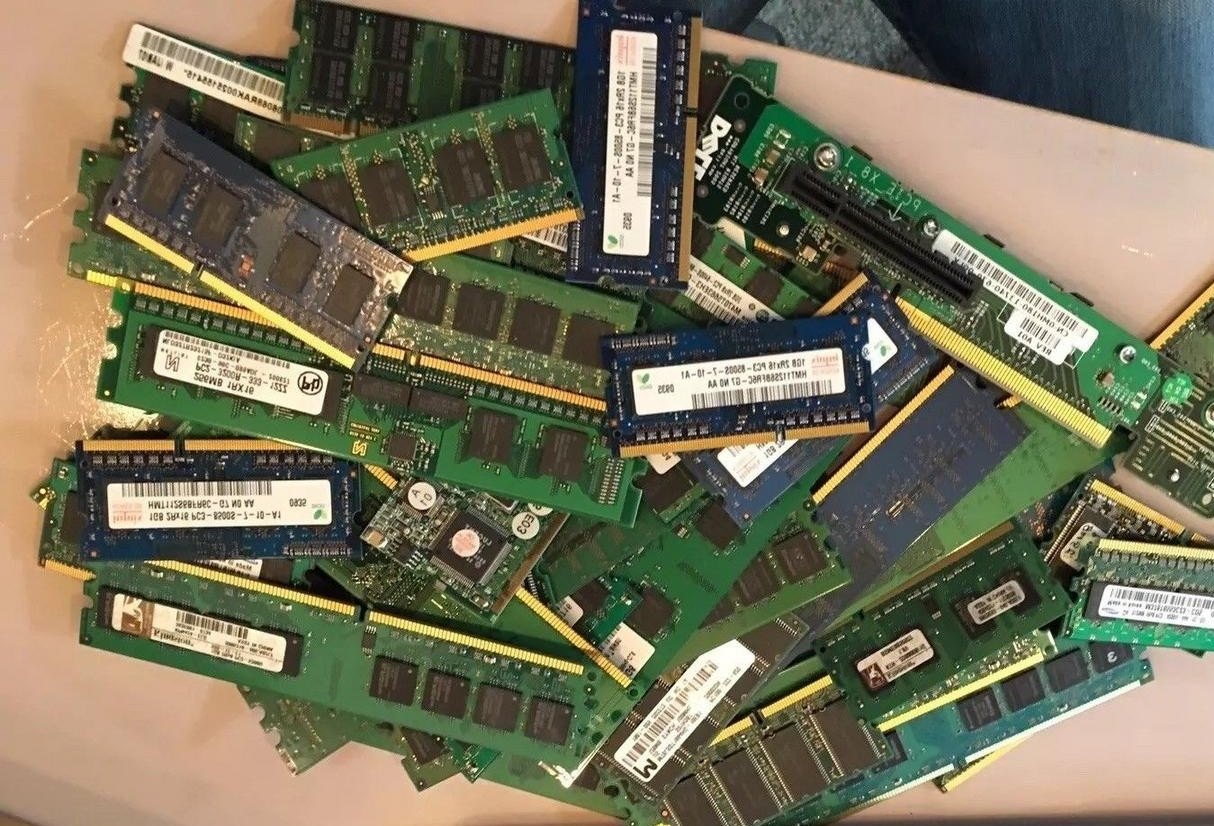
In the fast-paced world of technology, choosing the perfect laptop can be a daunting task. Among the myriad of specifications and features to consider, one question looms large: "How much memory do I need on my laptop?" The amount of RAM (Random Access Memory) your laptop possesses can significantly impact its performance and your overall computing experience. In this article, we will delve into the factors that influence your RAM requirements and help you make an informed decision about the optimal memory capacity for your specific needs.
Memory Vs. Storage
When it comes to computers and electronic devices, the terms "memory" and "storage" are often used interchangeably, leading to confusion. In reality, memory and storage serve distinct purposes in the world of computing. This article will unravel the crucial differences between memory and storage, shedding light on their roles and importance in your devices.
Memory
Memory, often referred to as RAM (Random Access Memory), is your device's workspace. It is the place where your computer temporarily stores data that is actively being used or processed. Think of it as your desk while working on a project - it provides quick access to documents and tools you need at the moment.
Key Points About Memory (RAM)
- Speed -Memory is exceptionally fast, allowing your computer to access data rapidly. This speed is crucial for multitasking and running applications smoothly.
- Volatile -RAM is volatile memory, which means it loses its data when your device is powered off or restarted. It's used for short-term storage only.
- Capacity -Memory capacity is typically measured in gigabytes (GB) and is considerably smaller than storage capacity. Common laptop configurations range from 4GB to 32GB, with more being better for demanding tasks.
Storage
Storage, on the other hand, serves as your device's long-term data vault. It's where your files, documents, applications, and the operating system reside, even when the device is powered off. Imagine storage as your filing cabinet, where you keep everything you need for the long haul.
Key Points About Storage (HDD Or SSD)
- Capacity -Storage capacity dwarfs memory capacity. It's measured in terabytes (TB) and can be several times larger than your device's memory.
- Speed -While storage is significantly slower than memory, modern devices use faster SSDs (Solid-State Drives) instead of traditional HDDs (Hard Disk Drives) to reduce load times and improve overall performance.
- Persistence -Unlike memory, storage is non-volatile, meaning it retains data even when your device is turned off. It's where your operating system, apps, photos, videos, and other files are stored for the long term.
The Symbiotic Relationship
Memory and storage work together to provide a seamless computing experience. When you open an application or file, it's loaded from storage into memory for quick access by the CPU. The more memory your device has, the more data it can keep readily available, reducing the need to access slower storage devices.
What Is RAM?
RAM, or Random Access Memory, is a type of computer memory that plays a critical role in the performance and functionality of computers and electronic devices. RAM is a volatile memory, which means that it is used to temporarily store data that the computer is actively using or processing. It provides high-speed data access to the central processing unit (CPU) and allows the CPU to quickly read and write data, which is essential for the efficient operation of software applications and the overall responsiveness of a computer system. Here are some key characteristics and functions of RAM:
- Speed -RAM is much faster than long-term storage devices like hard disk drives (HDDs) or solid-state drives (SSDs). This speed allows the CPU to access data and instructions rapidly, which is crucial for multitasking and running software smoothly.
- Volatile -RAM is volatile memory, meaning that it loses its data when the computer is powered off or restarted. This characteristic makes it ideal for storing data that needs to be quickly accessed but not permanently saved.
- Capacity -RAM capacity is typically measured in gigabytes (GB). Common RAM configurations for laptops and desktop computers range from 4GB to 32GB or more. The amount of RAM a device has directly impacts its ability to handle multiple tasks simultaneously and run memory-intensive applications.
- Temporary Storage -When you open an application or file on your computer, it is loaded into RAM for quick access by the CPU. This temporary storage in RAM allows for smooth and efficient execution of programs.
- Resource Management -Operating systems use RAM for various purposes, including running system processes, managing open applications, and caching frequently used data. Adequate RAM is essential for ensuring that your computer operates efficiently.
What Does RAM Do In A Computer?
RAM (Random Access Memory) is a fundamental component of a computer's hardware architecture that serves several crucial functions:
- Data Storage -RAM stores data and instructions that the computer's central processing unit (CPU) needs to access quickly. It acts as a high-speed, temporary storage location for data that the CPU is actively using.
- Running Applications -When you open an application or software program on your computer, it is loaded into RAM. This allows the CPU to quickly access and execute the program's code and data. The more RAM you have, the more applications and data can be loaded and run simultaneously without significant slowdowns.
- Multitasking -RAM enables multitasking by allowing the computer to switch between running applications swiftly. When you switch from one program to another, the data associated with the first program is temporarily stored in RAM while the new program is loaded. This seamless transition between tasks is facilitated by the speed of RAM.
- Operating System Operations -The operating system (e.g., Windows, macOS, Linux) uses RAM to manage system processes, run background tasks, and store frequently accessed system files. A portion of RAM is reserved for these essential system functions.
- Caching -RAM is used for caching frequently accessed data from slower storage devices like hard disk drives (HDDs) or solid-state drives (SSDs). This caching improves system performance by reducing the need to fetch data from the slower storage, as RAM provides much faster access times.
- Data Processing -RAM plays a critical role in data processing tasks. For example, when you edit an image, the image data is loaded into RAM to allow for quick manipulation and preview. Similarly, when you play a video game, game assets and textures are loaded into RAM to provide a smooth gamingexperience.
- Temporary Storage -RAM is volatile memory, which means it loses its data when the computer is powered off or restarted. This characteristic makes it ideal for temporary storage of data that is actively in use but not meant to be permanently saved.
How Much RAM Does My Laptop Have?
To find out how much RAM your laptop has, you can follow these steps:
On Windows
- Right-click on the "Start" button (usually located in the lower-left corner of your screen).
- Select "System" or "System Information."
- In the System Information window, look for "Installed Physical Memory (RAM)" or a similar entry. This will show you the amount of RAM your laptop has.
On MacOS
- Click the Apple menu () in the top-left corner of your screen.
- Select "About This Mac."
- In the "Overview" tab of the About This Mac window, you'll see the amount of RAM listed next to "Memory."
On Linux (Ubuntu, For Example)
- Open a terminal window.
- Type the following command and press Enter: free-h
- The output will show you the total amount of RAM under "total."
Can I Change The Amount Of Ram I Have?
Whether or not you can change the amount of RAM in your laptop depends on several factors:
- Laptop Model -Some laptops have RAM that is soldered directly onto the motherboard and cannot be upgraded. In such cases, the amount of RAM is fixed and cannot be changed.
- User-Accessible RAM Slots-Many laptops have user-accessible RAM slots that allow you to upgrade or add more RAM. These slots are typically located beneath a panel on the bottom of the laptop. If your laptop has these slots and they are not already filled, you can often add more RAM.
- Compatibility -When upgrading RAM, it's essential to ensure that the new RAM modules are compatible with your laptop. This includes considerations such as the type of RAM (e.g., DDR3, DDR4), the speed of the RAM, and the maximum supported capacity. Consult your laptop's documentation or the manufacturer's website for compatibility information.
- Operating System -Your laptop's operating system should also support the additional RAM. Most modern operating systems can handle increased RAM without issues.
- Skills and Tools -If your laptop allows for RAM upgrades, you should be comfortable with opening your laptop and have the necessary tools to do so safely. Some laptops may require more technical skills than others for RAM installation.
- Warranty -Be aware that opening your laptop and making hardware changes may void its warranty. Check your laptop's warranty terms before attempting any upgrades.
If you determine that your laptop supports RAM upgrades and you're comfortable with the process, you can purchase compatible RAM modules and follow the manufacturer's instructions for installation. Alternatively, you can have a professional technician or a computer repair shop handle the upgrade for you if you're unsure about the process.
What Types Of Storage Exist For Computers?
Computers use various types of storage devices to store data, files, and software. These storage devices differ in terms of technology, capacity, speed, and use cases. Here are some of the primary types of storage that exist for computers:
Hard Disk Drives (HDD)
HDDs are traditional mechanical storage devices that use spinning platters and magnetic heads to read and write data. They are known for their large storage capacities and relatively low cost. However, they are slower than solid-state drives (SSDs) and are more susceptible to physical damage due to their mechanical components.
Solid-State Drives (SSD)
SSDs have no moving parts and use NAND flash memory to store data. They are significantly faster than HDDs, provide better reliability and durability, and are the preferred choice for laptops and desktops looking for speed and performance. SSDs come in various form factors, including SATA, M.2, and NVMe.
EMMC (Embedded MultiMediaCard)
eMMC is a type of flash storage commonly found in budget laptops and tablets. It is soldered onto the motherboard, which helps reduce the overall cost of the device. However, eMMC storage is generally slower than SSDs and offers less capacity.
Optical Drives
Optical drives, like DVD or Blu-ray drives, are used for reading and writing optical discs. While they are less common today due to digital distribution and USB drives, they are still used for specific tasks like media playback, software installation, and data backup.
USB Flash Drives
USB flash drives are portable, plug-and-play storage devices that connect to a USB port. They are commonly used for data transfer, backup, and portability. USB flash drives come in various capacities, from a few gigabytes to several terabytes.
Network Attached Storage (NAS)
NAS devices are specialized storage solutions connected to a network, allowing multiple users or devices to access and store data on a shared network drive. NAS devices often include multiple hard drives or SSDs configured in RAID arrays for data redundancy and increased performance.
Cloud Storage
Cloud storage refers to online storage services provided by companies like Google Drive, Dropbox, and Microsoft OneDrive. Users can store files and data on remote servers accessible via the internet. Cloud storage offers scalability and accessibility from anywhere with an internet connection.
RAM (Random Access Memory)
While not typically considered primary storage, RAM plays a crucial role in a computer's performance by providing temporary, volatile storage for active applications and data. It allows the CPU to access and manipulate data quickly.
Hybrid Drives
Hybrid drives combine the speed of an SSD with the large storage capacity of an HDD. They use an SSD cache to store frequently accessed data, resulting in improved performance over traditional HDDs.
External Hard Drives/SSDs
External storage devices, such as external HDDs or SSDs, connect to a computer via USB, Thunderbolt, or other interfaces. They provide additional storage capacity and can be used for backups, data transfer, or expanding a computer's storage.
How Much RAM Do I Need On My Laptop?
The amount of RAM (Random Access Memory) you need for your laptop depends on your specific usage scenario and computing requirements. Here are some general guidelines to help you determine how much RAM is appropriate for your needs:
To run a basic computer model, you need at least 4GB of RAM. Still, doing just the bare minimum might not be a good use of your time, since your computer will probably slow down when you run two or more programs at once, such as Internet viewing, email, and some word processing. So, unless you are using an old system, we suggest that you run your computer with 8GB of RAM.
We suggest 8GB of RAM for people who don't use their computers very often. This amount of memory should be enough if you use the internet, email, a lot of office apps, and flash games, and do more than one thing at a time.
We recommend 16GB of RAM for basic users who want their computer to run faster and smoother. This could be helpful if you often have several apps open and running at the same time. This is also a good amount of RAM for businessworkers and casual gamers.
We suggest 32 GB of RAM for serious gamers, engineers, scientists, and people who are just starting out with multimedia. Even as your computer gets older, these memory-intensive apps can still run smoothly with this amount of RAM. So, "It's just right" means "It's not too much."
Most of the time, 64GB of RAM is suggested for high-end users. If you're a professional user of RAM-intensive programs like AAA games running at the highest refresh rate and resolution, 3D modeling software, or 4K or 8K picture or video editing software, you may want to future-proof your computer's memory by installing at least 64GB of RAM.
Consider how long you plan to keep your laptop. Over time, software becomes more demanding, so having extra RAM can help future-proof your device. If you intend to keep your laptop for several years, investing in more RAM upfront can be beneficial.
Budget constraints are a reality for many laptop buyers. If you're on a tight budget, prioritize other aspects like the CPU and storage while getting as much RAM as your budget allows.
Keep in mind that different operating systems have different RAM requirements. Windows laptops may benefit from more RAM than Chromebooks or MacBooks due to differences in resource management and software demands.
What To Do If I Need More RAM?
If you find that your computer is running out of RAM and you need more to meet your computing needs, there are several steps you can take:
Check Your Laptop's Upgradeability
- Determine if your laptop has user-upgradeable RAM slots. Not all laptops allow for RAM upgrades, especially ultrabooks and some thin and light models.
- Consult your laptop's user manual or visit the manufacturer's website to find information about the RAM upgrade process and compatibility.
Determine Maximum Supported RAM
- Find out the maximum amount of RAM your laptop can support. This information is usually available in your laptop's documentation or on the manufacturer's website.
- Note the type (e.g., DDR3, DDR4) and speed of RAM supported by your laptop.
Purchase Compatible RAM Modules
- Buy RAM modules that are compatible with your laptop's specifications, including type, speed, and capacity. Make sure the modules adhere to the maximum supported amount.
- You can find compatible RAM from various manufacturers and retailers. Popular brands include Kingston, Crucial, Corsair, and G.Skill.
Back Up Your Data
Before performing any hardware upgrades, back up your data to prevent potential data loss during the process.
Install The New RAM
- Shut down your laptop and disconnect it from any power source.
- Remove the laptop's bottom panel to access the RAM slots (if necessary).
- Carefully insert the new RAM modules into the available slots, following the manufacturer's instructions and ensuring that the notches align correctly.
- Close the laptop, reattach the bottom panel, and power it on.
Check For Recognition
After upgrading, check if your laptop recognizes the new RAM. You can do this by checking your computer's system information or using diagnostic tools.
Optimize Your System
Once you've installed the additional RAM, you may want to optimize your operating system for better performance. Ensure your operating system recognizes and utilizes the added RAM effectively.
Monitor Performance
Keep an eye on your laptop's performance after the RAM upgrade. You should notice improvements in multitasking, faster application loading times, and overall system responsiveness.
Dispose Of Old RAM Safely
If your laptop had RAM modules that you replaced, consider recycling or disposing of them properly, following electronic waste guidelines in your area.
Consider Professional Assistance
If you're uncomfortable with performing hardware upgrades or your laptop doesn't have user-upgradeable RAM slots, consider seeking professional assistance. Many computer repair shops offer RAM upgrade services.
How Much Storage Do I Need On My Laptop?
The amount of storage you need on your laptop depends on your specific usage requirements and the types of files and applications you intend to store. Here are some guidelines to help you determine how much storage is appropriate for your needs:
- Basic Usage (web browsing, email, word processing) -For basic tasks like web browsing, email, and word processing, a laptop with 128GB to 256GB of storage is usually sufficient. These activities do not consume much storage space.
- Casual Usage (media consumption, light gaming) -If you plan to store music, videos, and a few lightweight games, consider a laptop with 256GB to 512GB of storage. This range provides more room for media files and some software.
- Productivity and General Use (multitasking, office applications) -Users who multitask, work with office suites, and store moderate amounts of data may find laptops with 512GB to 1TB of storage suitable. This range offers ample space for documents, software, and additional media.
- Content Creation(photo and video editing, 3D modeling) -Contentcreators and professionals working with large media files should opt for laptops with 1TB or more storage. High-resolution photos, videos, and 3D models can quickly consume significant storage capacity.
- Gaming and Heavy Storage Needs -Gamers who install multiple large games and users with extensive storage needs (e.g., large video libraries) should consider laptops with 1TB or more of storage, preferably with a fast SSD for game load times.
Consider how long you plan to keep your laptop. Over time, software and files accumulate, requiring more storage space. If you intend to keep your laptop for several years, it's wise to invest in more storage capacity upfront.
Keep in mind that you can supplement your laptop's internal storage with cloud storage solutions (e.g., Google Drive, Dropbox) and external hard drives or SSDs. These options can help you expand storage as needed without immediately upgrading your laptop's internal drive.
The choice of operating system also impacts storage requirements. Windows laptops may need more storage than Chromebooks or MacBooks due to differences in software and system files.
When considering storage capacity, it's essential to account for both the operating system and any pre-installed software, as they consume a portion of the available storage. Additionally, you should factor in any future needs and whether you'll be regularly cleaning or archiving files to free up space.
People Also Ask
What Happens If I Don't Have Enough RAM On My Laptop?
If your laptop doesn't have enough RAM for the tasks you're running, it can lead to performance issues such as slow application loading times, freezing, and system crashes. Your laptop may also struggle to handle multitasking efficiently.
How Can I Free Up RAM On My Laptop?
You can free up RAM on your laptop by closing unnecessary applications and processes running in the background. Using the Task Manager (Ctrl + Shift + Esc on Windows or Activity Monitor on macOS), you can identify and end tasks consuming excessive memory.
Is More RAM Always Better For A Laptop?
While more RAM can lead to better performance, having excessive RAM beyond your actual needs may not provide significant benefits. The ideal amount of RAM depends on your specific usage. Adding more RAM than necessary won't necessarily make your laptop faster.
What Are Virtual Memory And Paging On A Laptop?
Virtual memory is a memory management technique used by operating systems. When your laptop runs out of physical RAM, it uses a portion of the storage drive (HDD or SSD) as virtual memory. Paging is the process of transferring data between RAM and virtual memory to ensure that the system can run smoothly even when RAM is full.
Can I Mix Different Types Or Sizes Of RAM Modules On My Laptop?
It's generally not recommended to mix different types or sizes of RAM modules (e.g., different speeds or capacities) on a laptop. For optimal performance and stability, it's best to use identical RAM modules. Mixing RAM can lead to compatibility issues and may not work as expected.
Conclusion
In the quest for the ideal laptop, understanding your RAM needs is a fundamental step. RAM is the heartbeat of your computer, affecting everything from basic tasks to resource-intensive applications. By considering factors such as your usage scenario, operating system, budget, and future-proofing needs, you can determine the right amount of memory to ensure your laptop serves you well.
Whether you're a casual user, a creative professional, or a dedicated gamer, striking the right balance of RAM will empower your laptop to perform at its best, making your computing journey smoother and more efficient. So, when asking, "How much memory do I need on my laptop?" remember that the answer lies in aligning your RAM with your unique computing demands.



